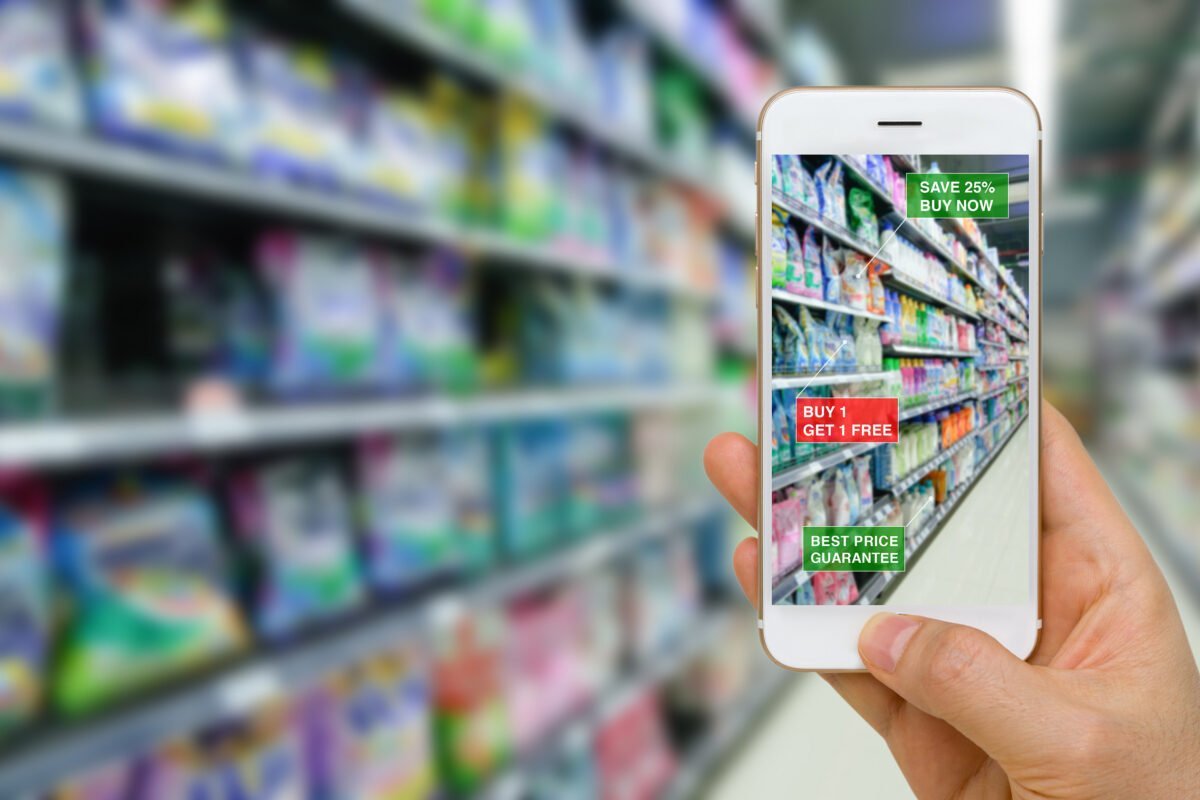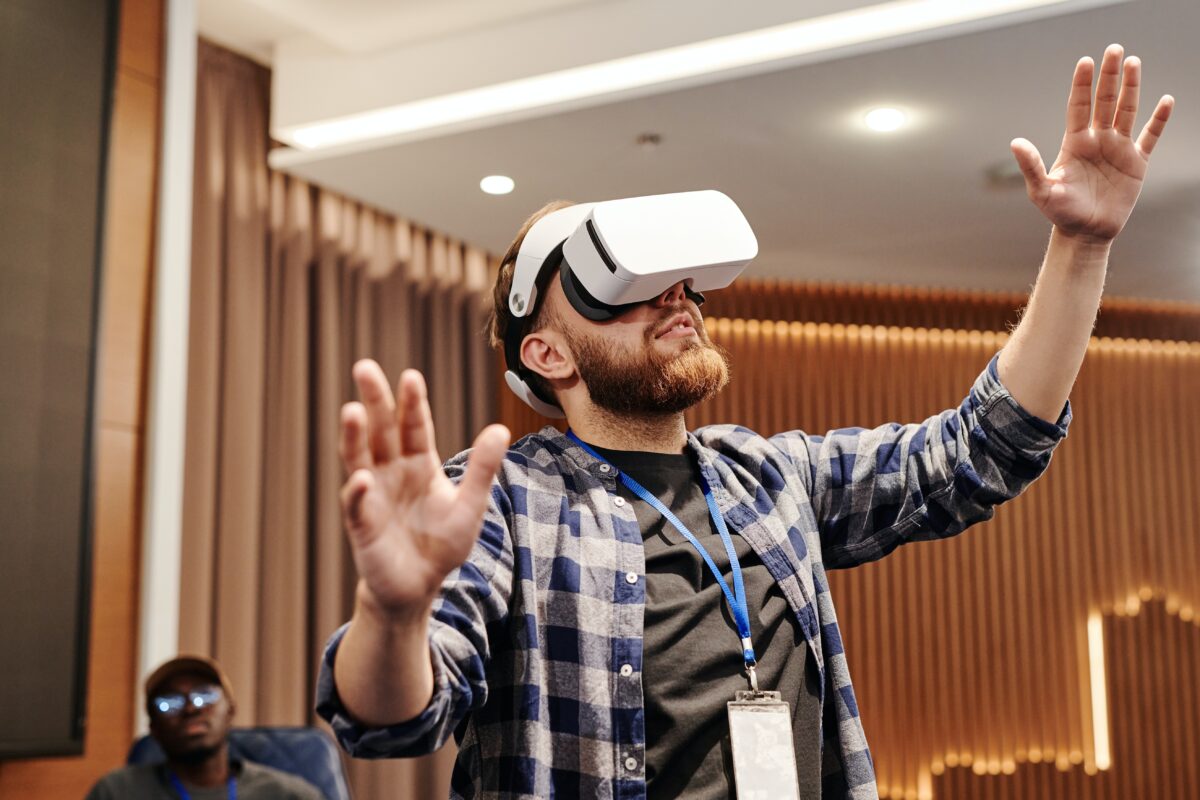The retail industry is changing, creating new opportunities for growth and improving the customer experience.
According to Goldman Sachs, the global market for Augmented Reality (AR) and Virtual Reality (VR) in retail will hit $1.6 billion by 2025 with 32 million users.
The retail industry was quick enough to adopt this innovative technology which has huge potential to enhance retail marketing efforts.
Implementing this technology will help retail businesses to grow, providing an immersive and engaging shopping experience to their customers.
How AR/VR is Transforming the Retail Industry
- In-Store Virtual Experience
AR/VR can make the shopping experience even more compelling and exciting for customers by offering an immersive and interactive environment that replicates those of physical stores.
It provides customers with interactive virtual tours where they can interact and get detailed information about the products.
Customers can experience these virtual shopping tours by just staying in their homes during this pandemic.
This technology tends to be cost-effective and is the most effective way to engage with the customers in a near real virtual environment.
It gives retailers the upper hand in making the shopping experience even more exciting for the customers.
- In-Store Virtual Navigation
In the current condition due to the pandemic, shopping interactions need to require less physical contact.
However, this problem can be solved by using AR/VR technology prioritizing customers’ safety and convenience.
This gives retailers the opportunity to engage with customers and cater to their shopping senses.
Using AR/VR can help customers get specific locations for the items they are searching for in the store. It makes it much easier for the customers to navigate and locate the items faster.
By using this technology for in-store navigation, retailers can help customers minimize interaction and time spent in the store.
- Creating contactless tryouts
The retail outlets for clothing and accessories depend on customers to test their goods in stores.
It can be very tedious and time-consuming for the customers to wait for their turn outside the trial rooms.
Retailers can take the advantage of virtual mirrors to practically enable product trials in stores to overcome this problem.
Customers can figure out the size, how the apparel looks, and suits their body by standing in front of a virtual mirror.
Before buying the products at physical stores, customers can also virtually try the product online.
It is possible to use a similar application by using AR/VR solution that enables customers to take product trials from their homes.
This could speed up the process of decision-making and help retailers generate more sales.
- Creating a Personalized Shopping Experience
The benefits of personalized and targeted marketing are already acknowledged by retailers.
AR/VR can take advantage of this marketing strategy to provide customers with a better shopping experience.
This technology can add real-world enhancements that are not feasible in those physical stores.
Retailers can add 3D contents to provide a much more immersive and engaging experience to their customers.
Customers can also use AR/VR tools to create personalized products unique to their tastes.
This helps to create a better shopping experience where each customer has special and exclusive products which result in an increase in sales for the retailers.
- V-Commerce
Retailers should focus more on making the e-commerce channel more efficient and experience-driven.
Due to the pandemic, customers are now more comfortable shopping online instead of visiting physical stores.
The ability for using AR/VR in online retailing is evident. It enables retailers to create a far more realistic and interactive environment for the customers.
Using this technology can replicate those of physical stores, as well as add real-world enhancements that are not feasible.
- Immersive and Engaging Shopping Experience
AR/VR solutions greatly enhance customer engagement and their shopping experience.
By implementing this technology retailers can provide customers with virtual tours of stores from their homes.
They can gain accurate details of the products they want to buy by using AR and VR applications.
This completely changes the way customers look for and buys things online or offline.
This technology allows customers to be fully immersed and create a unique shopping experience that takes customer engagement to a whole new level.
- Online Marketing
Generally, retailers rely on the actual touch and feel of their products to drive buying decisions of the customers.
Launching new products during this pandemic where customers cannot visit physical stores has become a challenge.
However, AR/VR can be a perfect solution to create a digitally enhanced product experience where customers can interact and engage from their homes.
This will create a better shopping experience and interaction and enhance customer satisfaction and boost brand awareness and loyalty.
Conclusion
In the retail industry, augmented reality and virtual reality have already made progress.
Retailers implementing this technology are better equipped to respond to changing customer behavior.
It allows retailers to provide a much more immersive shopping experience and enhance customer satisfaction.
This can help retailers gain long-term benefits and have a competitive edge in the market.
With XR technology-based platforms like our very own AwventXR, we can help you to plan and create such an immersive shopping experience for your ideal customers.




